HOPE not hate uses cookies to collect information and give you a more personalised experience on our site. You can find more information in our privacy policy. To agree to this, please click accept.
HOPE not hate uses cookies to collect information and give you a more personalised experience on our site. You can find more information in our privacy policy. To agree to this, please click accept.
2023 marks 100 years since the first fascist group was established in Britain. Alive to the danger, people began to oppose fascism immediately, starting a British anti-fascist tradition that continues to this day.

This timeline is a companion to our new report, ‘They Shall Not Pass: 100 years of fascism and anti-fascism’ which includes profiles of the major fascist individuals and groups, and those who most successfully opposed them, over the past century. It tells stories of dangerous times, heart-breaking loss, fear, hatred and violence. It celebrates remarkable acts of resistance, bravery, sacrifice and progress.
There will be countless stories of remarkable resistance and painful loss that have not made their way into this anniversary project. But we hope this work brings the story of fascism and anti-fascism together in a way you will find informative, but also inspiring.
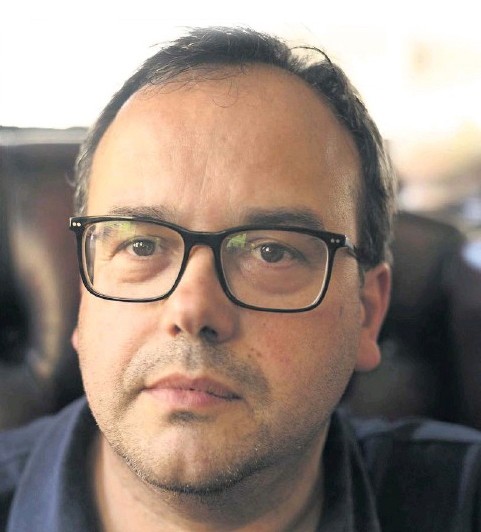
THE STRUGGLE BEGINS: The 1920s bore witness to the birth of the first British fascist movement, and in response, the anti-fascist resistance. Early anti-fascist groups struggled to convince parts of the left, including the Labour Party, of the threat posed by fascism, while there were debates among activists over the use of physical force as a tactic – a dividing line that exists to this day.
6 May – the British Fascisti is launched by Rotha Lintorn-Orman.
Modelled on Mussolini’s National Fascist Party, which had marched to power in Italy the previous year, the event marks the birth of British Fascism.
The British Fascisti (or British Fascists as it quickly became known) uses a range of different tactics in order to grow and advance its cause, including marches, trainings and the production of its own newspaper. The group has paramilitary overtones, with members wearing uniforms and operating outside of parliamentary politics. The British Fascists will go on to launch the careers of several later-prominent figures on the British far right, such as Arnold Leese (the Imperial Fascist League founder) and William Joyce (later known as Lord Haw-Haw).
People begin to oppose fascism immediately, starting a British anti-fascist tradition that continues to this day.
Arnold Leese and Harry Simpson became the first constitutionally elected fascists in England, becoming councillors in Stamford.
In Soho, London, Henry Johnstone leads the launch of the People’s Defence Force, the first organised anti-fascist opposition in Britain, in response to the British Fascisti.
Close to Hebden Bridge in Yorkshire, The National Union for Combating Fascismo (NUCF) is founded. The group produces an anti-fascist newspaper that is claimed to have a circulation of several thousand.
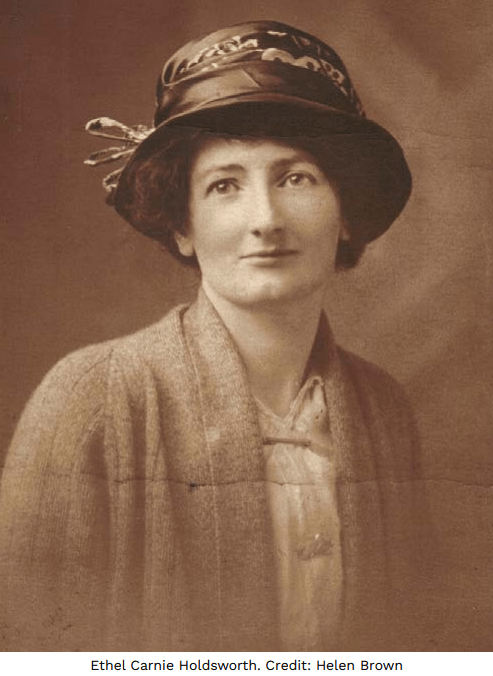
The socialist, feminist, poet, and novelist Ethel Carnie Holdsworth establishes the NUCF with her husband Alfred. The NUCF opposes the British Fascisti and raises awareness within the socialist movement of the domestic fascist threat.
The Imperial Fascist League is founded by Arnold Leese.
INTENSIFICATION: The 1930s saw the rise of European fascism in Germany, Italy and Spain. Anti-fascist fighters from around the world travelled to Spain to defend its democratic Republic against Franco’s forces. And in Britain, as the British Union of Fascists grew, hundreds of thousands of people mobilised in opposition, with the Battle of Cable Street seeing between 100,000 – 300,000 blocking a fascist march through East London.
The English Mistery is formed by William John Sanderson. The anti-democratic organisation argues for the revival of the hereditary aristocracy, alongside views of extreme nationalism, racism, antisemitism, anti-feminism and a belief in eugenics.
1 October – The British Union of Fascists (BUF) is founded by Oswald Mosley. With the economic destruction of the Great Depression causing misery, Mosley advocates for a one-party, authoritarian system which would, he claims, dissolve class antagonisms and lead to the triumph of the “new fascist man”. The BUF looks to fascism in Italy for inspiration, incorporating the Fasces symbol, the Blackshirt uniforms and the straight-armed salute. The BUF is a recipient of major financial assistance from Mussolini during the decade.
8 June – The BUF holds a mass rally at Olympia, London, with over 15,000 fascists attending. Over 1,000 anti-fascists protest outside with many also infiltrating the meeting. BUF stewards beat demonstrators in violent scenes, entirely destroying Mosley’s illusion of respectability.
9 September – As many as 150,000 anti-fascists mobilise in an unprecedented show of force against the BUF in Hyde Park, London. Resistance is organised by the Communist Party of Great Britain (CPGB), which has grown frustrated with the perceived inaction of the Labour Party on the fascist threat.
18 July – After General Francisco Franco leads far-right units of the Spanish army in a rebellion against the left-wing government, Communist deputy Dolores Ibarruri declares on national radio that the people should fight the fascist takeover. She ends with the words: “It is better to die on your feet than live on your knees! No Pasarán!”
This call is heard all over the world, and roughly 35,000 fighters travel to defend Spain’s democratic
Republic. Many are political exiles or refugees from fascist dictatorships in their own countries. An
estimated 20% to 25% give their lives in a conflict that remains notorious for its atrocities, and in which Franco would ultimately prevail. Many veterans of the Brigades went on to play a key role in WWII resistance movements across Europe.
4 October – The Battle of Cable Street – The Jewish community of East London and its allies block the streets in order to prevent Oswald Mosley and the BUF from marching through. The fascists are subjected to a humiliating defeat as the police find themselves unable to clear a path. Days earlier, a 77,000-strong petition had been handed to the Home Secretary, calling for the march to be banned. When the government refuses to stop the fascists, the local community takes direct action, with organising led by the newly-formed Jewish People’s Council against Fascism and Antisemitism (JPC).

Phil Piratin, dedicated communist, anti-fascist and defender of tenants’ rights, plays a leading role in the Battle of Cable Street and later goes on to help establish the Stepney Tenant’s Defence League and become MP for Mile End in 1945.
Stepney Tenants Defence League is founded. Members are mostly Communist, Jewish and predominantly women. Recognising that growing socio-economic tensions in East London could be a fertile recruiting ground for fascists, and acting in response to poor quality housing and profiteering landlords, the group organised thousands of renters to take collective action including rent strikes and eviction resistance. By 1939, the STDL will win concessions or repairs of approximately £60,000 and boast 11,000 members, in comparison to the BUF’s 5,800 nationally.
One of two full time organisers at STDL, Donovan was responsible for teaching hundreds of tenants their rights and coaching them to organise against their landlords. She was the wife of an unemployed hall porter and was described as being overlooked and shy, but Phil Piratin describes how she took to organising: “So rapidly did the campaign develop, so many things needed to be done, so many people were required, that Ella soon found herself doing many of the things she had hitherto considered beyond her powers”.
1 September – Nazi Germany invades Poland. WWII begins.
Defence Regulation 18B is passed. Many British fascists are interned.
A RESURGENCE: Despite the innumerable horrors committed under its name during WWII, fascism in Britain survived the war years, albeit in a diminished form. Fascists were initially cautious about having a fully visible presence once more, though over time small bands of Mosley followers formed into new groups.
For the many anti-fascists returning home after fighting Hitler’s Nazis, it was shocking and dismaying to find fascists back on the streets of London and other cities. Determined not to let the Union Movement go unopposed, the 43 Group, formed in September 1946 from Jewish ex-servicemen with the sole purpose of defending the Jewish community from fascism, took the fight to the enemy with regular confrontations against fascists throughout the last years of the 40s.
The BUF is banned by the government, and its leading members interned.
WWII-era restrictions on fascist groups are lifted. With encouragement from pre-war fascist leader Oswald Mosley, new organisations are created. These include the British League of Ex-Servicemen, which distributes fascist and antisemitic literature, harasses Jewish people and vandalises Jewish buildings.
A group of Jewish ex-servicemen and women form the 43 Group, in furious response to the re-emergence of fascist groups in post-war Britain. Dedicated to the defeat of fascism by any means necessary, the group quickly develops a reputation as fierce anti-fascist fighters.
The Union Movement is launched by Oswald Mosley.
June – As Mosley takes the Union Movement on the road to build support, the 43 Group organises to meet it, leading to a series of major battles. This includes a clash in Brighton in June 1948, in which the 43 Group and their allies obliterate a fascist march.
NEW HATRED: Mosley’s Union Movement shifted the focus of its anger and hatred towards non-white immigrants from the West Indies and South Asia, and his movement sought to capitalise on so-called race riots in the late 50s. Antisemitism remained prevalent, and was a driving force for a new fascist group launched by A. K. Chesterton in the mid 50s. However, a broader social hostility towards fascists meant that the scale of organised anti-fascist activity waned towards the end of the decade.
13 April – The League of Empire Loyalists is launched by Arthur K. Chesterton, in opposition to the supposed Jewish “puppet masters” who Chesterton believes are working to bring down the British Empire.
The White Defence League is founded by Colin Jordan. Jordan has grown disillusioned with the League of Empire Loyalists in 1954 due to its supposedly lenient attitude towards Jewish people. With the White Defence League, he aims to create a Nazi movement and to forge links with other European groups of a similar bent.
23 August – The Notting Hill Riots. A group of nine armed white men drive around west London and attack West Indian people, with five seriously injured. Simultaneously, racist violence breaks out in Nottingham. The following weekend, racist harassment leads to violence and events escalate quickly, with armed mobs rampaging around west London, leaving destruction in their wake. The week of rioting and violence which follows shocks Britain, with the far right quick to capitalise on the violence.
The Institute of Race Relations is launched.
17 May – Kelso Cochrane, a 32-year-old Antiguan-born carpenter and aspiring lawyer, is killed in a racist attack in Southam Street, Notting Hill.
HITTING THE SPLITTERS: A new party emerges in 1960 with the aim of fighting elections and winning political office. Breakaway factions and splits within the fascist movement mark the decade, and new anti-fascist groups form to meet the new threats.
The 1960s version of the British National Party is formed, following the amalgamation of John Bean’s National Labour Party and Colin Jordan’s White Defence League. Despite Mosley’s failure in the 1959 General Election, the party sets out electoral aims.
20 April – The National Socialist Movement is launched by vicious antisemite Colin Jordan. On 1 July it holds its infamous Trafalgar Square rally.
August – Colin Jordan launches the World Union of National Socialists.
1 July – an estimated 2,000 – 4,000 anti-fascist protestors turn out to Trafalgar Square to counter the NSM rally. The 62 Group is established, made up of former members of the 43 Group as well as young Jewish men and women. It follows the 43 Group’s model, disrupting fascist events through physical force and running covert intelligence operations.
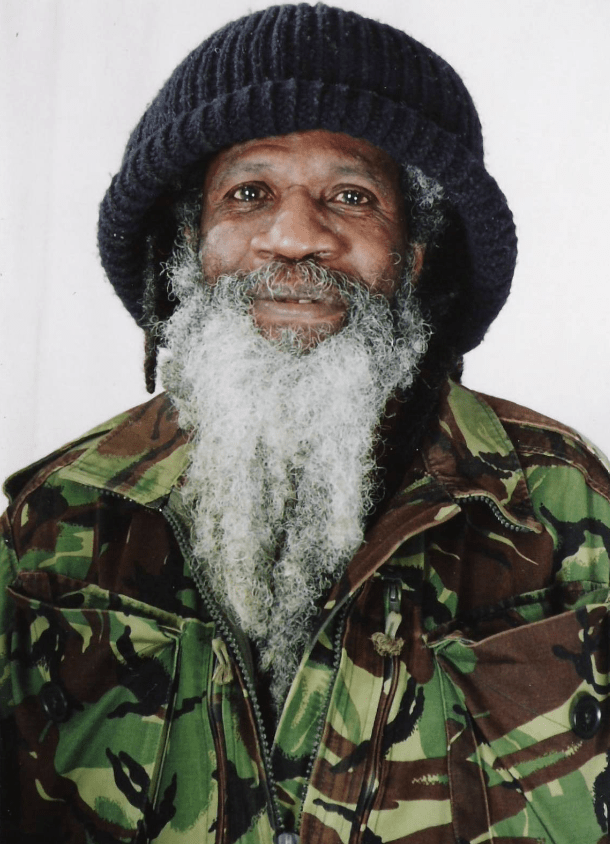
Gerald Calliste-Vevian was one of the first prominent black anti-fascist activists in the UK. Born in Grenada in 1940, Gerry moved to London at the age of 22 and fought against police racism and brutality as well as fascism, often organising physical opposition on the streets. In the 1960s and 1970s, Gerry was active in the Universal Coloured People’s Association (UCPA) and then the Black Unity and Freedom Party (BUFP) of which he was later elected president.
Searchlight magazine is launched by Gerry Gable.
ELECTORAL WIPEOUT: The 1970s far right was dominated by the National Front (NF) which grew at an alarming rate, with 303 candidates standing in the 1979 General Election. Searchlight provided intelligence and analysis to the anti-fascist movement, which was led by Communist Party branches and more localised anti-fascist committees in the first half of the decade. In the second half of the decade, Rock Against Racism and the Anti-Nazi League led the amalgamation of anti-fascism with youth and popular culture.
February – Searchlight magazine is relaunched, with Maurice Ludmer as Managing Editor and Gerry Gable as Editor.
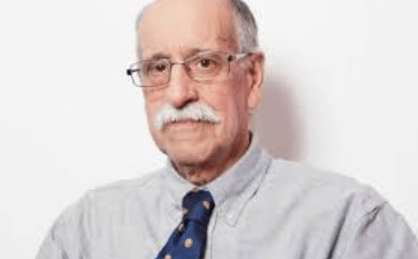
Gerry Gable launched the investigative anti-fascist magazine Searchlight. After more than 60 years on the front line against fascism, he continues to be a revered figure in Britain’s anti-fascist movement.
4 June – An 18-year-old student Gurdip Singh Chaggar is murdered in Southall, stabbed to death by a white gang. Fed up of NF violence and police harassment and frustrated with the response of community leaders, 200 young people marched to the police station and after two of their number were arrested, surrounded the building, demanding their release. The police gave in and the Southall Youth Movement was born. Similar groups were established across the country, forming a network of Asian Youth Movements.
The journal Campaign Against Racism and Fascism (CARF) is first published, dedicated to bringing together anti-racist and anti-fascist reporting and campaigning. In 1977, it was adopted as the paper of the (London) Anti-Racist, Anti-Fascist Co-ordinating Committee (ARAFCC).
The North Staffordshire Campaign Against Racism and Fascism (NorSCARF) is founded in response to an upsurge in National Front (NF) activity in Stoke- on-Trent. NorSCARF would later go on to also campaign heavily against the BNP.
4 May – Altab Ali, a young Bengali from East Pakistan, is murdered in a racist attack in East London.
30 April – an estimated 100,000 people march seven miles from Trafalgar Square to Victoria Park, Hackney for a gig, as part of an event organised by Rock Against Racism. Founded two years earlier by Red Saunders in response to growing racism in music, it is estimated that RAR got between half a million and a million people involved in anti-racist activity – whether attending events, handing out leaflets or painting graffiti.
3 May – The National Front has 303 candidates standing at the General Election but every single one loses their deposit. The NF spirals into decline, and within a year has split into three factions.
24 April – Blair Peach is murdered by a police officer at a demonstration against the NF in Southall.
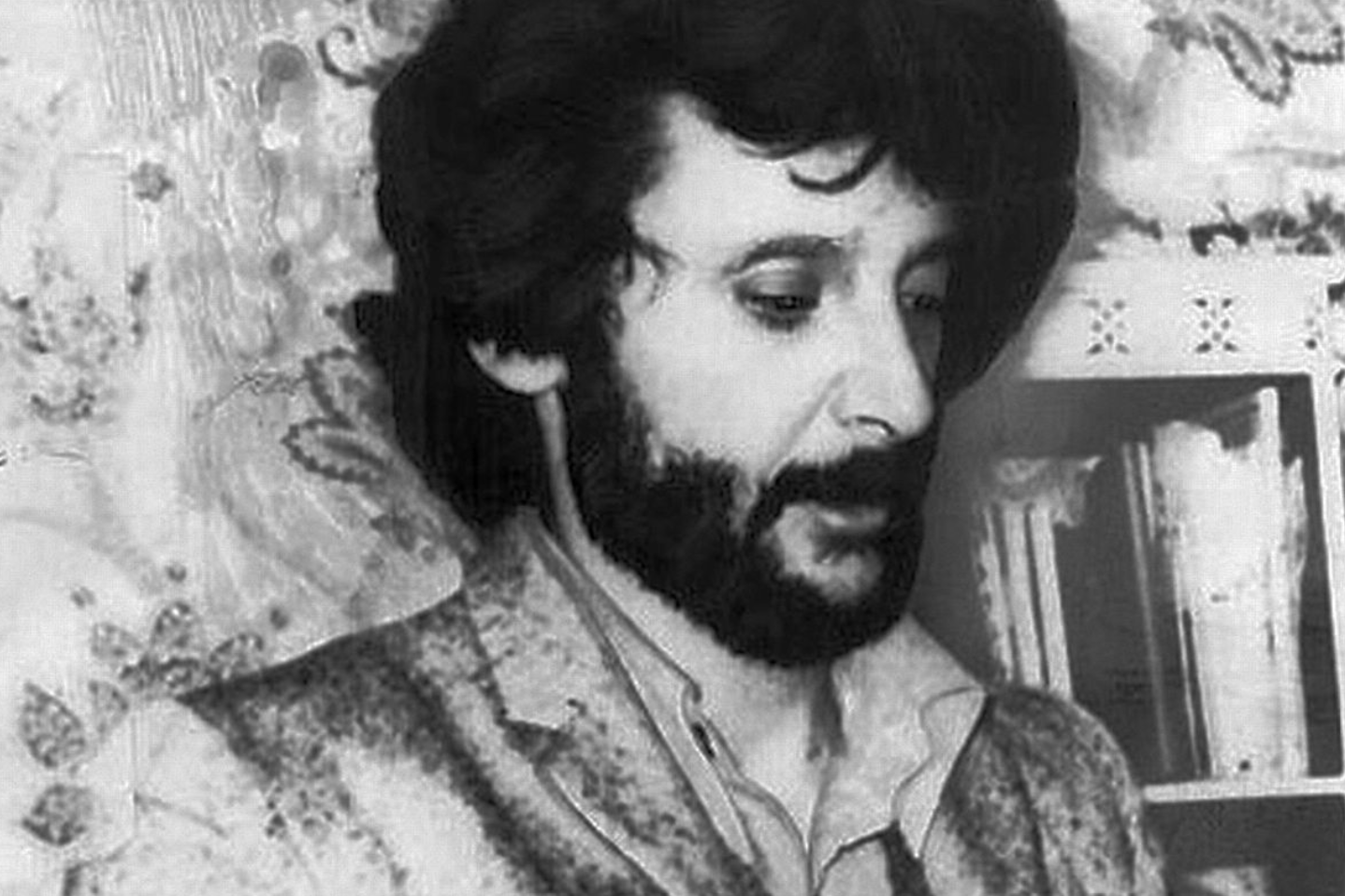
A passionate campaigner against racism and fascism, becoming an organiser within the Anti-Nazi League, and standing alongside the local Bengali community in around Brick Lane.
MILITANT RESISTANCE: While the NF spiralled into decline and the violent British Movement was wound down, a new nazi skinhead music network, and a new British National Party, were established. The 80s also saw the rise of a new militant force in opposition to the far right, in Anti-Fascist Action and its core group, the feared Red Action (RA). Mobilising hundreds of militants, their main purpose was to engage fascists in physical confrontation wherever and however possible.
The Newham Monitoring Project is launched following a community campaign in the wake of the murder of a local teenager, Akhtar Ali Baig, in East London.
Red Action (RA) is established by former members of the Anti-Nazi League (ANL). After the ANL winds down its ‘combat groups’, several militant anti-fascists are expelled from the group for ‘squadism’
– continuing with violent physical disruption of fascist gatherings. These expellees form the core group of RA members.
7 April – The British National Party is founded by John Tyndall.
The Tyne and Wear Anti-Fascist Association is launched.
Ray Hill reveals himself as an anti-fascist infiltrator in the British Movement.
Anti-Fascist Action is launched. AFA goes on to wage street war against the British National Party, the British Movement and Blood & Honour throughout the 80s and 90s.
The neo-Nazi music network Blood & Honour (B&H) is launched by Ian Stuart Donaldson and Nicky Crane.
Dev Barrah takes a key role in the fight against the opening of the BNPs bookshop in Welling, and leads many campaigns to get it closed. Through his work with Greenwich Action Committee Against Racist Attacks (GACARA), Barrah continues to fight for justice and equality.
May – anti-fascists discover the location of a B&H gig, to which over 1,000 tickets have been sold. Many hundreds of AFA militants intercept gig attendees as they arrive on coaches, dealing them a serious beating. The event is an abject humiliation for B&H and costs them a large amount of money, and AFA’s presence begins to loom large in the minds of the B&H leadership, who become even more security minded.
The BNP and Combat 18 (C18) became the dominant far-right forces in the 90s, muscling out the NF and the British Movement. Many anti-fascist organisations were in operation around the country, with a range of ideologies and tactics. The victory of the BNP in a council seat in Millwall, London signalled the limitation of the militant approach and signposted a further shift in the way anti-fascism was done.
Combat 18 is founded by Charlie Sargent. Formed as the BNP’s security wing, the group takes its name from the first and eighth letter of the alphabet – A H – the initials of Adolf Hitler. C18 would become a violent street fighting group whose ambition was race war, and leading a campaign of terror against trade unionists, anti-fascists and others such as anti-apartheid activists. As the BNP “modernised”, C18 drifted away and would become even more hardline in its publications, whilst the BNP began to try and present a somewhat more sanitised image of itself.
12 September – The ‘Battle of Waterloo’ saw anti-fascists disrupt a nazi skinhead gig, organised by Blood and Honour (B&H). B&H had attempted to organise a major international gig in London, and had sold hundreds of tickets. They told skinheads to meet at Waterloo station, from where they would be directed to the venue. Anti-Fascist Action (AFA) called a national mobilisation. Over 1,000 antifascists occupied the Waterloo redirection point, and chased any arriving skinheads through the neighbouring streets.
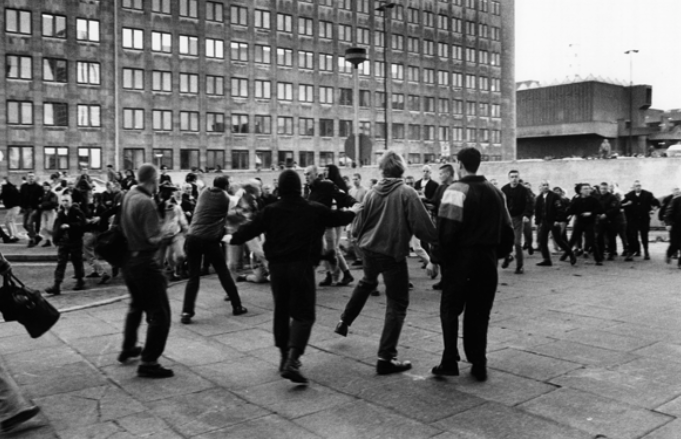
22 April – 18-year old Stephen Lawrence is stabbed to death in a racist attack in Eltham, South East London. His killing is one of several racist murders in the area in the early 90s, with Rolan Adams and Rohit Duggal having previously lost their lives at the hands of racist thugs.
The BNP had established a headquarters in Welling in 1989 and fed into a culture of racism and violence in South East London. The killings sparked a wide anti-fascist campaign to have the BNP’s headquarters shut down.
Meanwhile, Stephen Lawrence’s parents, Neville and Doreen, rightly believed that the investigation into their son’s murder was hampered by the attitudes of the police officers involved. Two of Stephen’s killers were eventually convicted in 2012, after a dogged campaign by the Lawrence family. The resulting Inquiry by William MacPherson concluded that institutional racism was rife in the police service, helping change the national conversation on race.
16 September – The BNP candidate Derek Beackon wins a council seat in Millwall, London
16 October – The Battle of Welling takes place, with an anti-racism march against the BNP bookshop in the area resulting in clashes with the police.
The Community Security Trust is launched – a national charity with around 100 members of staff and 2,000 volunteers, all dedicated to protecting the UK’s Jewish community from antisemitism, anti-Jewish hate crime and terrorism.
28 May – an estimated 100,000 people attend a free carnival in Brixton hosted by the ANL.
April – David Copeland plants a series of nail bombs in London, killing three and injuring 140 people.
October – Nick Griffin takes over the leadership of the British National Party.
CHANGING TACTICS: Under Nick Griffin the BNP continues its ‘modernisation’ efforts, shifting away from the street and towards community politics as a way to win over local people to fascism at election time. Its success is shocking, but short-lived, as anti-fascist groups including HOPE not hate develop new tactics to combat the threat.
11 April – David Irving loses his libel case against the historian of Holocaust denial, Deborah Lipstadt.
July – Riots erupt in Bradford, Harehills and Oldham.
United Against Fascism (UAF) is launched. Formed from the ashes of the Anti-Nazi League and the National Assembly Against Racism, UAF goes on to provide a demonstration-oriented outlet for anti-fascists, and runs anti-BNP election campaigns.
HOPE not hate is launched by Nick Lowles. HOPE not hate began as the campaigning wing of Searchlight, an anti-fascist organisation established in 1964. Searchlight was primarily a research organisation, monitoring the far right and producing a monthly magazine.
As the BNP grew in political prominence from 2001 onwards, traditional anti-racist and anti-fascist slogans and tactics are proving ineffective. We carry out research to understand why people were attracted to it, and what we could do to counter this.
Our slogan ‘hope, not hate’ encapsulated our positive message, and as our campaigning work grew, this became our name.
4 May – The BNP sees its strongest local election results, winning 12 councillors in Barking & Dagenham and 32 in total across the country.
Love Music Hate Racism holds a huge concert in London’s Victoria Park, bringing people together in opposition to the BNP. Organisers estimate 100,000 attend to see the likes of The Good, The Bad and The Queen, Hard-Fi and Roll Deep.
4 June – The BNP receives 943,600 votes in the European Elections, winning two seats.
27 June – The English Defence League is founded by Stephen Lennon (AKA Tommy Robinson).
22 October – Much to the frustration of anti-fascists, Griffin appears on Question Time, providing a boost of interest to the BNP in the process.
RETURN TO THE STREETS: The BNP slides into irrelevance and the far right reverts to demonstrations through the EDL, which itself begins to implode after 2013. The shocking murder of Jo Cox MP in 2016 by a far-right terrorist was celebrated by neo-Nazi group National Action, whose own plot to murder an MP a year later is uncovered by a HOPE not hate mole. A rising threat of far-right activity online requires another shift in tactics by anti-fascist groups to meet the new challenge.
HOPE not hate (HNH) runs a massive local campaign in Barking & Dagenham to defeat the BNP’s plans to take control of the council. Hundreds of thousands of pieces of literature are delivered with over 1,000 people getting involved.
Britain First is established by Jim Dowson and led by Paul Golding. Founded from the ashes of the BNP, the group quickly gathers attention through a range of social media tricks and provocative stunts, such as “mosque invasions”. It will later pivot its strategy towards elections (with disastrous results).
The neo-Nazi terror group National Action is founded by Benjamin Raymond and Alex Davies.
15 August – The neo-nazis of National Action are completely humiliated during an attempt to march through Liverpool city centre. The Anti-Fascist Network (AFN) and others mobilise to trap NA in Liverpool Lime Street, with the nazis eventually placed in the lost luggage department by police for their own safety. Some nazis manage to escape the station but are confronted by anti-fascists outside.
31 January – After the National Front called for a “unity” demonstration in Dover, figures from across Britain’s far-right fringes assembled for an almighty clash with anti-fascists. The police were quickly overwhelmed and the two sides traded projectiles and blows across Dover for hours. Dozens of far-right activists arrested and more than 30 are imprisoned, with sentences of up to seven years.
16 June – The Labour MP Jo Cox is murdered by the fascist Thomas Mair.
16 December – National Action is proscribed by the Home Office as a terrorist organisation, the first ban of a fascist group since WWII.
Generation Identity launches a UK branch on Facebook. The far-right network is in the midst of a project attempting to sail into the Mediterranean Sea and hinder refugee rescue missions during the so-called ‘migrant crisis’.
The ‘More In Common’ movement is born and the annual Great Get Together is created, in memory of Jo Cox. Millions of people have taken part as communities come together, reject division, and celebrate Jo’s message that we have more in common than that which divides us.
July – A plot to murder Rosie Cooper MP by National Action member Jack Renshaw is foiled by former member-turned-informant Robbie Mullen.
Over the summer, some of the largest far-right street protests in decades take place to protest the imprisonment of Stephen Lennon, AKA Tommy Robinson, for contempt of court.
April – HOPE not hate successfully lobbies the Home Office to refuse entry to Generation Identity leaders who are planning to visit the UK.
October – The Feminist Anti-Fascist Assembly (FAF) mobilises against the Democratic Football Lads Alliance (DFLA), a far-right group which has been organising demonstrations in central London all summer. Chanting “no pasaran”, and holding a banner that read “No Rape. No Racism. No Silence to Violence”, FAF face off with DFLA at Trafalgar Square, leaving them unable to complete their route.
Former National Action member Jack Renshaw is sentenced to life behind bars for a plot to kill Rosie Cooper MP, averted due to the actions of anti-fascist mole Robbie Mullen.
September – Patriotic Alternative is launched by Mark Collett.
A NEW DECADE BEGINS: Against a backdrop of the disintegration of the BNP and National Action, Patriotic Alternative cemented its presence in 2020, but just three years later it experienced a major split. Anti-fascist activists including here at HOPE not hate continue our work researching and exposing organisations like PA, hindering their ability to grow. Large-scale community activism in Bradford and Llantwit Major in Wales have shown that the far right can still be removed from an area by the positive force of local people coming together to tackle the politics of hate in inventive ways.
Generation Identity officially disbands. HOPE not hate infiltrated the group on numerous occasions, publishing a series of damaging exposés that crippled the group.
Britain First re-registers with the Electoral Commission, enabling them to stand in elections once again. The group had been deregistered in 2017 for failing to meet reporting requirements.
Anti-migrant activity increases by 102% in a year, with attacks on asylum seekers’ accommodation, protests and activists filming people arriving on small boats on the south coast.
Andrew Leak firebombs a migrant processing centre in Dover, before taking his own life. He had a history of sharing far-right content and making racist comments.
Over 2,000 people attend our family fun day in south Bradford, to enjoy free food from across the world and activities for children including a climbing wall, bouncy castles, skating, football and Rugby League. This is part of our community-building work, in partnership with Sandale Community Hub and Bradford Park Avenue football club, in an area where far-right parties have historically been successful.
October – The Walk In starring Stephen Graham tells the story of National Action’s plot to murder Rosie Cooper. Millions of viewers are introduced to the far-right threat and learn about HOPE not hate’s role in stopping it.
April – Patriotic Alternative splits, as a group of disgruntled officers, led by the group’s National Administration Officer Kenny Smith, break away and proclaim themselves the founding members of a new organisation, the “Homeland Party”.
25 March – The residents of Llantwit Major successfully stand up to an anti-migrant demonstration organised by Patriotic Alternative. One resident dresses up as a giant Welsh cake as part of a “Big Welsh Cake Welcome”.
Sadly, despite a century of opposition, fascism has survived in this country and continues to pose a real danger.
HOPE not hate exists challenge this extremism and build local communities. Our work focuses on the organised far right, the communities that are susceptible to them and the issues and policies which give rise to them.
Together, we can celebrate the remarkable acts of resistance, bravery, sacrifice and progress made over the last 100 years, and ensure that anti-fascism remains strong in the UK.
Support our work tackling hate and help maintain the UK’s largest archive of fascist and anti-fascist materials by joining the HOPE action fund today.
Promoted by Nick Lowles on behalf of HOPE not hate at 167-169 Great Portland Street, 5th Floor, London, W1W 5PF, United Kingdom.
HOPE not hate
HOPE not hate Limited (Reg. No. 08188502)
Telephone +44 (0)207 952 1181
Registered office 167-169 Great Portland Street, 5th Floor, London, W1W 5PF, United Kingdom.
HOPE not hate Limited (“HOPE not hate”) receives grants from HOPE not hate Charitable Trust, a registered charity in England and Wales with charity number 1013880.
Site built by 89up
Promoted by Nick Lowles on behalf of HOPE not hate at 167-169 Great Portland Street, 5th Floor, London, W1W 5PF, United Kingdom.
HOPE not hate
HOPE not hate Limited (Reg. No. 08188502)
Telephone +44 (0)207 952 1181
Registered office 167-169 Great Portland Street, 5th Floor, London, W1W 5PF, United Kingdom.
HOPE not hate Limited (“HOPE not hate”) receives grants from HOPE not hate Charitable Trust, a registered charity in England and Wales with charity number 1013880.
Site built by 89up